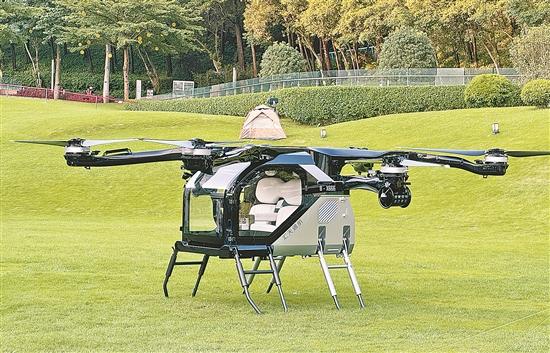Source: Lingnan on the Cloud
09/12/2024 Source: Lingnan on the Cloud
Share:
In recent days, two major developments have taken place in Guangdong's low-altitude economy. On the product side, Guangzhou-based XPENG AERAOHT debuted the world's only new "species" of flying vehicles, representing a breakthrough in the field. On the application side, at the first Guangdong-Hong Kong-Macao Greater Bay Area Low-Altitude Economy Seminar (Guangzhou), experts explored futuristic applications for low-altitude technologies.

This product debut offers a glimpse into the future of aerial vehicles while the futuristic visions set a direction for its development. The convergence of these efforts is expected to further accelerate the growth of Guangdong's low-altitude economy.
In recent years, the low-altitude economy, as a key player in emerging strategic industries, is gaining momentum, meeting the growing public demand for convenient lifestyles. Guangdong, China's top economic province, has been positioning itself in this sector for some time. The province has included low-altitude economy initiatives in its government work reports and launched the "Action Plan for High-Quality Development of the Low-Altitude Economy in Guangdong Province (2024-2026)," with a goal of exceeding 300 billion yuan in economic output by 2026. Several cities including Guangzhou, Shenzhen, Zhuhai, and Huizhou have also introduced city-level policies to support the development of this sector.
On the corporate side, industry leaders like EHang and XAG in Guangdong are driving innovation across the entire supply chain, contributing to remarkable achievements. EHang, for example, is the world's only manufacturer of unmanned aerial vehicles with three key certifications (type certificate, airworthiness certificate, and production certificate). XAG, an agricultural drone company based in Guangzhou, made waves at the Agritechnica (the world's largest trade fair for agricultural machinery and equipment) in May, partnering with Thailand's CP Group to further promote automated farming equipment in Thailand.
However, as the low-altitude economy transitions from rapid growth to high-quality development, it faces challenges such as complex airspace management and insufficient safety and intelligence in handling dynamic environments. Looking ahead, industry experts are sharing insights on how to push the sector forward toward sustainable and high-quality development.
Xing Hanfa, Vice President of the Guangdong Innovation Science Research Institute, Executive Dean of the Beidou Research Institute at South China Normal University, and Chief Technical Advisor for Guangzhou Chenxing Future Aviation Technology, emphasized the role of spatiotemporal information in empowering the low-altitude economy. He suggested transforming the low-altitude airspace into a measurable, manageable, and usable spatiotemporal data environment. He also highlighted the importance of building a new type of infrastructure to support this, ensuring safe, intelligent, and efficient flight operations. Xing argued that an integrated approach to communication, navigation, and remote sensing will be key to ensuring safety, while advancements in spatiotemporal intelligence will enhance smart decision-making, therefore driving the sector toward high-quality growth.
Professor Cheng Chengqi, a member of the National Air Traffic Management Advisory Committee (NATMAC) and Director of the Aerospace Information Engineering Research Center at Peking University, called for the creation of a unified national spatiotemporal standard for low-altitude operations, as well as the establishment of a three-dimensional traffic signal system to regulate low-altitude transportation. These efforts would further support the development of the necessary infrastructure for low-altitude air traffic management.
Source: Lingnan on the Cloud